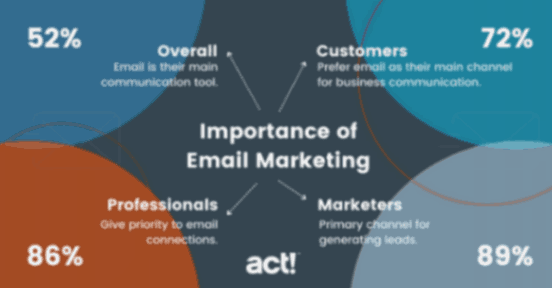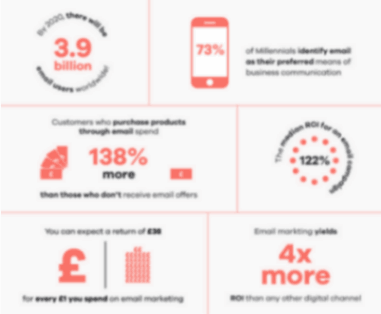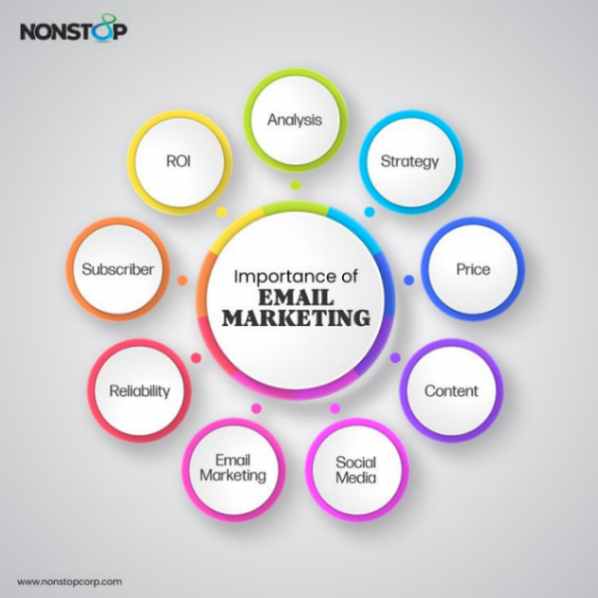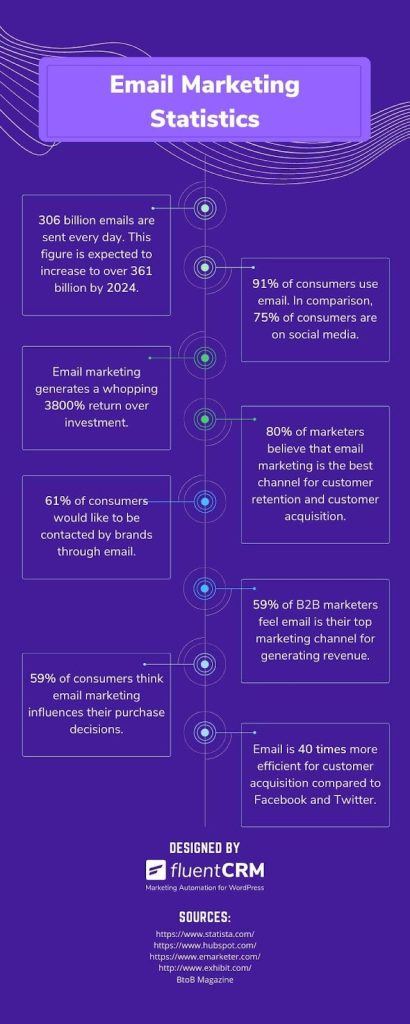Email marketing is the use of emails to promote products or services. It helps businesses connect with their audience.
In today’s digital age, email marketing stands out as a powerful tool. It allows direct communication with customers. Imagine being able to send a message straight to someone’s inbox. This makes email marketing very personal and effective. Businesses can share news, updates, or promotions easily.
It’s also cost-effective compared to other marketing methods. With the right strategies, emails can build trust and loyalty. This type of marketing can turn casual browsers into loyal customers. So, understanding email marketing and its importance is crucial for any business aiming to grow and succeed.
Introduction To Email Marketing
Email marketing is a powerful tool for businesses. It helps you connect with your audience directly. Through email marketing, you can share updates, promotions, and valuable content.
Definition
Email marketing is the use of email to promote products or services. It involves sending commercial messages to a group of people. These messages can be newsletters, special offers, or event invitations.
Email marketing aims to build relationships and trust. It also encourages customer loyalty and boosts sales.
Brief History
The first email was sent by Ray Tomlinson in 1971. This marked the start of email communication. In the 1990s, the internet became popular. Businesses saw the potential of using email for marketing.
Over time, email marketing evolved. Companies began using sophisticated tools and strategies. Today, it remains a key part of digital marketing. It continues to be effective and widely used.

Credit: www.act.com
Benefits Of Email Marketing
Email marketing stands out as a powerful tool for businesses. It offers numerous benefits that can help grow your business. Let’s explore some key advantages of email marketing.
Cost-effectiveness
Email marketing is budget-friendly. You don’t need a big budget to start. Sending emails costs less than other marketing methods. You can reach many people without spending much money. This makes it a great option for small businesses. You can also use free or low-cost email marketing tools. These tools help manage your email campaigns easily.
High Roi
Email marketing often delivers a high return on investment (ROI). Many studies show that email marketing can yield impressive results. You invest a small amount but can get a large return. This makes it a smart choice for businesses wanting to grow. You can track how well your campaigns perform. This helps you improve your strategy over time.
Types Of Email Marketing
Email marketing is a powerful tool for businesses. It helps connect with customers directly through their inboxes. There are several types of email marketing, each serving a different purpose. Understanding these types can help you choose the best approach for your business needs.
Newsletter Emails
Newsletter emails keep your audience updated. They often include company news, updates, or industry insights. Sending regular newsletters helps maintain a relationship with your subscribers. It shows that you value their attention and interest.
Promotional Emails
Promotional emails focus on driving sales. They often include special offers, discounts, or new product announcements. These emails aim to encourage immediate action from the reader. Promotional emails are effective for boosting short-term sales and engagement.

Credit: think3.co.uk
Creating An Email Marketing Strategy
Creating an email marketing strategy is essential for your business. It helps you reach and engage your audience. This plan guides your efforts and ensures you achieve your goals. Let’s explore how to create an effective email marketing strategy.
Setting Goals
First, determine what you want to achieve. Do you want to increase sales? Maybe you want to build your brand? Clear goals give direction to your strategy. They help measure your success. Write down your goals and keep them in mind.
Make your goals specific and achievable. For example, aim to get 100 new subscribers in a month. Or, seek a 20% increase in open rates. These goals are clear and measurable. They keep you focused on your target.
Target Audience
Know who you are emailing. Understand your audience’s needs and interests. This helps tailor your messages. Use tools to segment your audience. Group them by age, location, or behavior.
Personalized emails perform better. They show you understand your subscribers. Use their names and send relevant content. This builds trust and increases engagement. Happy subscribers are more likely to convert.
Building An Email List
Building an email list is crucial for effective email marketing. It allows you to connect directly with your audience. A well-maintained list helps in driving engagement and increasing sales. Here are key components to build a solid email list.
Opt-in Forms
Opt-in forms are a primary tool for collecting email addresses. They should be simple and easy to fill out. Place them on your website where visitors can see them easily.
- Homepage
- Blog posts
- Landing pages
- Pop-ups
Ensure your forms are visually appealing. Use clear and concise language. Highlight the benefits of subscribing.
Lead Magnets
Lead magnets are incentives offered to potential subscribers. They encourage people to join your email list. Effective lead magnets provide value to your audience.
| Type of Lead Magnet | Description |
|---|---|
| eBooks | Informative guides on relevant topics. |
| Checklists | Step-by-step guides to complete tasks. |
| Discounts | Special offers for subscribers. |
Choose lead magnets that resonate with your target audience. Make sure they are easy to access after subscribing. Promote them through various channels to maximize reach.
Designing Effective Emails
Designing effective emails is crucial for successful email marketing. The design should be visually appealing and easy to read. Effective emails grab attention and encourage action. Let’s explore how to design impactful emails.
Email Templates
Using email templates helps maintain consistency. Templates save time and ensure a professional look. Choose a template that matches your brand. Make sure it is responsive. This ensures it looks good on all devices.
Customizable templates allow you to add your unique touch. You can adjust colors, fonts, and images. Consistency in design builds trust. Use your logo and brand colors. This helps in brand recognition.
Content Tips
Content is the heart of your email. It should be clear and concise. Use short sentences and simple language. Start with a catchy subject line. This increases open rates.
The body of the email should be engaging. Use bullet points for easy reading. Highlight important information in bold. This makes it easy to skim. Include a clear call-to-action (CTA). It should be noticeable and compelling.
Visuals enhance your content. Use relevant images and graphics. They should support your message. Avoid large files that may slow down loading. Ensure all links work correctly. Broken links frustrate recipients and reduce trust.
| Element | Tip |
|---|---|
| Subject Line | Keep it short and engaging |
| Body Text | Use simple and clear language |
| Call-to-Action | Make it noticeable and actionable |
| Images | Ensure they are relevant and optimized |
Remember, effective emails are not just about looks. They should deliver valuable content. Always test your emails before sending. This ensures they look good and work well.
Analyzing Email Campaigns
Analyzing email campaigns is crucial for understanding their effectiveness. It helps marketers make informed decisions. By examining key metrics, businesses can optimize their strategies. This leads to better engagement and higher conversion rates.
Key Metrics
Tracking key metrics is essential. Open rate shows how many recipients opened the email. Click-through rate (CTR) reveals the percentage of recipients who clicked on a link. Conversion rate measures how many completed a desired action. Bounce rate indicates the percentage of emails that couldn’t be delivered. Unsubscribe rate shows how many opted out of your email list.
A/b Testing
A/B testing, or split testing, compares two versions of an email. It helps determine which version performs better. Test different subject lines, email copy, or call-to-action buttons. Analyze which version gets higher open rates or click-through rates. Use the insights to improve future email campaigns.
Email Marketing Best Practices
Email marketing remains a powerful tool for businesses. Following best practices ensures your campaigns are effective and compliant. Let’s explore some key practices that can enhance your email marketing efforts.
Personalization
Personalization is crucial in email marketing. It helps create a connection with your audience. Personalized emails have higher open and click rates.
- Use recipient’s name: Start your email with the recipient’s name. This adds a personal touch.
- Segment your audience: Group your email list based on interests or behavior. Send tailored content to each group.
- Dynamic content: Use content that changes based on the recipient’s preferences or past interactions.
Personalization helps build a stronger relationship with your audience. It makes your emails more relevant and engaging.
Compliance With Regulations
Complying with email marketing regulations is essential. It ensures your emails are lawful and builds trust with your audience.
| Regulation | Requirement |
|---|---|
| CAN-SPAM Act | Include a clear unsubscribe link. Provide a physical address. |
| GDPR | Get explicit consent from EU subscribers. Allow data access and deletion requests. |
| CASL | Get express or implied consent from Canadian subscribers. |
Following these regulations helps you avoid legal issues. It also shows your audience that you respect their privacy.

Credit: 2stallions.com
Frequently Asked Questions
What Is Email Marketing?
Email marketing is a strategy where businesses send promotional emails to a targeted audience. It helps in building relationships, promoting products, and driving sales.
Why Is Email Marketing Important?
Email marketing is important because it provides direct communication with customers. It is cost-effective and has a high return on investment.
How Does Email Marketing Work?
Email marketing works by sending targeted messages to subscribers. These messages can include promotional offers, updates, and personalized content to engage the audience.
What Are The Benefits Of Email Marketing?
The benefits of email marketing include increased brand awareness, customer loyalty, and higher conversion rates. It also allows for personalized communication.
Conclusion
Email marketing remains a powerful tool for businesses. It fosters direct communication. Builds trust with your audience. Boosts engagement and sales. Easy to use and cost-effective. Essential for any marketing strategy. Start your email marketing today. Watch your business grow.




